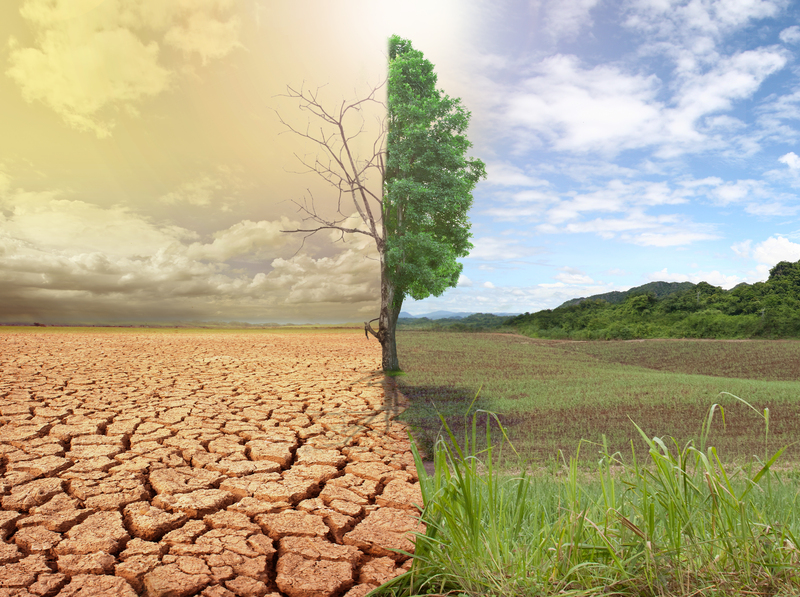The Different Faces of Hazardous Waste Explained
Posted on 20/10/2025
Hazardous waste is a significant concern for both environmental safety and public health. But what exactly does hazardous waste entail, why is it so dangerous, and what are its many different faces? In this comprehensive guide, we explore the unique types of hazardous waste, their sources, impacts, and the best practices for their management. Our goal is to provide you with an in-depth understanding of hazardous waste classification, identification, and handling to protect the environment and society as a whole.
Understanding Hazardous Waste: A Brief Overview
Hazardous waste refers to any material that poses a substantial or potential threat to public health or the environment. These wastes typically exhibit one or more hazardous characteristics, like being toxic, flammable, corrosive, or reactive. The multiple faces of hazardous waste vary significantly depending on their source, composition, and the risks they present.
- Toxicity: Can cause harm or death to living organisms, even in small amounts.
- Reactivity: May cause explosions, release toxic gases, or react violently with water or other substances.
- Corrosivity: Can erode or destroy living tissue and materials.
- Ignitability: Easily catches fire under normal conditions.
Federal regulations, such as those set by the U.S. Environmental Protection Agency (EPA), define hazardous waste by a combination of their physical and chemical properties as well as their origin. This framework ensures proper handling, transportation, treatment, and disposal to minimize risks.

Major Types of Hazardous Waste
The phrase hazardous waste encompasses a wide variety of wastes. These wastes are usually classified into several categories based on their characteristics and origins.
Chemical Hazardous Waste
This category includes waste materials composed of dangerous chemical substances from industrial activities, laboratories, agriculture, and even households.
- Solvents: Used in cleaning and manufacturing, such as acetone and benzene.
- Pesticides: Agricultural chemicals that can persist in the environment.
- Acids and Bases: Corrosive chemicals from cleaning and metal processing.
- Paints and Thinners: Common in automotive and construction industries.
These substances can leach into groundwater, cause poisoning, and disrupt ecosystems. Proper storage and disposal are essential for all chemical hazardous wastes.
Biomedical and Infectious Hazardous Waste
Often arising from healthcare facilities, biomedical or medical waste includes:
- Sharps: Needles, scalpels, and broken glassware.
- Contaminated materials: Bandages, gloves, and swabs stained with blood or other bodily fluids.
- Pathological waste: Tissues, organs, or bodily fluids.
Improper management of this hazardous waste can lead to disease outbreaks and environmental contamination, making regulated disposal methods essential.
Industrial Hazardous Waste
Industries generate vast amounts of hazardous waste, often in the form of:
- Sludges: From wastewater treatment processes.
- Heavy metals: Mercury, cadmium, lead, and chromium from mining, metal finishing, and electronics.
- Paint, varnish, and oil waste: Byproducts from manufacturing and automotive sectors.
Industrial hazardous waste must be handled through strict regulations to prevent contamination of soil and water systems.
Household Hazardous Waste
You may not realize it, but many common household products constitute a face of hazardous waste:
- Batteries: Lead-acid, lithium-ion, and alkaline types.
- Cleaners and disinfectants: Bleach, ammonia-based products, and oven cleaners.
- Pesticides and herbicides: Garden chemicals and insecticides.
- Electronics (e-waste): Contains toxic heavy metals and persistent organic pollutants.
Public disposal programs help households safely rid themselves of these hazardous materials to prevent widespread environmental impact.
Electronic Waste (E-Waste)
As technology advances, electronic waste is rapidly becoming one of the most pressing hazardous waste forms today. It includes:
- Computers, televisions, and cell phones
- Printers, fax machines, and other peripherals
E-waste often contains heavy metals, flame retardants, and other toxic substances. The improper disposal of electronics can severely threaten land, water, and human health.
Radioactive Hazardous Waste
This is a special category of hazardous waste generated from:
- Nuclear power plant operations
- Medical and research applications
- Mining of radioactive ores
Radioactive wastes are highly regulated due to their long-term dangers. Only specialized facilities can handle, store, and dispose of these wastes safely.
Characteristics of Hazardous Waste
Understanding the different faces of hazardous waste requires knowing the four key properties that define its risks:
Ignitability
Ignitable waste can catch fire easily at temperatures below 60?C (140?F). Examples include gasoline, solvents, and alcohol-based cleaners.
Corrosivity
Corrosive waste has extreme pH levels (very high or very low) and can destroy living tissues or materials. Battery acids and powerful cleaning agents are typical examples.
Reactivity
Reactive hazardous waste is unstable or reacts violently with water or air, potentially leading to explosions or toxic emissions. Old munitions, some laboratory chemicals, and pressurized gases fall into this category.
Toxicity
Toxic hazardous waste contains substances harmful to health and the environment. When leached into groundwater, toxins like mercury, lead, or pesticides can cause cancer, birth defects, and ecosystem damage.
Examples of Hazardous Waste Sources
Here is a closer look at the diverse origins of hazardous wastes:
- Manufacturing: Chemical processing, electronics, oil refineries, pharmaceuticals.
- Healthcare: Hospitals, clinics, research labs.
- Agriculture: Farms, greenhouses, horticultural operations.
- Businesses: Auto repair, dry cleaning, pest control services.
- Residential: Households using cleaners, paints, batteries, electronics, and pesticides.
The Environmental & Health Impact of Hazardous Wastes
The environmental and human health effects of hazardous waste are severe. These include:
- Soil Contamination: Reduces fertility, harms plants, and enters the food chain.
- Water Pollution: Leads to unsafe drinking water and aquatic ecosystem disruption.
- Air Quality Issues: Burning or incineration releases toxic fumes and particulates.
- Health Hazards: Skin irritation, respiratory problems, poisoning, cancers, and other chronic illnesses.
Some hazardous waste persists in the environment for decades, accumulating in living organisms and magnifying ecological harm.
How is Hazardous Waste Identified and Classified?
Governments and environmental agencies rely on strict criteria and testing procedures to identify and categorize hazardous wastes. The key steps are:
- Waste Analysis: Physical and chemical testing for hazardous characteristics.
- Listing: The EPA and other agencies maintain lists of known hazardous wastes.
- Characteristic Determination: Checking for ignitability, reactivity, corrosivity, and toxicity.
- SDS Review: Safety Data Sheets for products help determine hazardous materials in industrial settings.
Proper classification is vital for assigning correct storage, labeling, transportation, treatment, and disposal requirements.
Hazardous Waste Management: Safe Handling and Disposal
Because of its dangers, hazardous waste management must follow rigorous procedures:
Proper Segregation
Unsafe mixing of different hazardous wastes can trigger dangerous reactions. Segregation by type, container, and storage area is essential.
Storage and Packaging
Use containers designed for chemical resistance and correct labeling to indicate the type of hazardous waste.
Transportation
Certified professionals must transport hazardous waste using specialized vehicles. Strict regulations and manifest systems track every movement to reduce the risk of spills and accidents.
Treatment and Disposal
- Incineration: Burning some wastes at high temperatures renders them non-hazardous, but can release air pollutants.
- Chemical neutralization: Treats acids, bases, or toxins to make them less harmful.
- Secure landfill: Certain wastes are encased and buried, but must be closely monitored to avoid leaks.
- Recycling or Resource Recovery: Some chemicals can be reprocessed for reuse, reducing the hazardous waste footprint.
Laws and Regulations Governing Hazardous Waste
In the United States, the Resource Conservation and Recovery Act (RCRA) forms the backbone of hazardous waste law. Additional global efforts, such as the Basel Convention, regulate the movement of hazardous wastes across borders.
- Generator Responsibility: All generators of hazardous waste are legally responsible for its handling and disposal, from creation to end-of-life ("cradle to grave" principle).
- Permits and Documentation: Facilities processing hazardous waste must hold permits and maintain documentation.
- Reporting and Inspection: Regular reporting and surprise inspections ensure compliance and accountability.
Reducing and Preventing Hazardous Waste
Preventing the creation of hazardous waste is the most effective way to protect the environment. Best practices for minimizing hazardous waste include:
- Process optimization: Redesigning industrial workflows to use less toxic materials.
- Substitution: Replacing chemicals with safer alternatives wherever possible.
- Recycling and reuse: Reusing containers and recovering valuable chemicals reduces demand for new materials.
- Public awareness: Educating communities about safe product selection and disposal.
Green chemistry innovations are increasingly important in developing safer products and industrial processes, further reducing hazardous waste generation.

The Future of Hazardous Waste Management
Trends in hazardous waste management reflect technological progress, evolving regulations, and greater public concern for environmental health.
- Emerging contaminants: Recognition and control of new hazardous waste types, like nanomaterials and pharmaceutical residues.
- Circular economy: Moving towards zero-waste strategies and enhanced materials recovery.
- Smart monitoring: IoT and AI-driven sensors for real-time detection of hazardous leaks and spills.
- Community participation: Involving people in local hazardous waste collection events and recycling programs.
Conclusion: Recognizing the Different Faces of Hazardous Waste
Hazardous waste is not a single entity but a multitude of substances and materials--each with their own dangers and management requirements. From chemical and medical waste to e-waste and radioactive materials, every category demands proper handling to protect ecosystems and human health.
Through scientific advances, responsible policies, and greater public awareness, we can minimize the creation and dangers of hazardous waste. By recognizing and understanding the many faces of hazardous waste, we take crucial steps toward a safer, cleaner, and more sustainable future for everyone.
Remember: Always consult local regulations and professionals when dealing with potential hazardous materials and participate in community programs to safely dispose of hazardous household waste.



